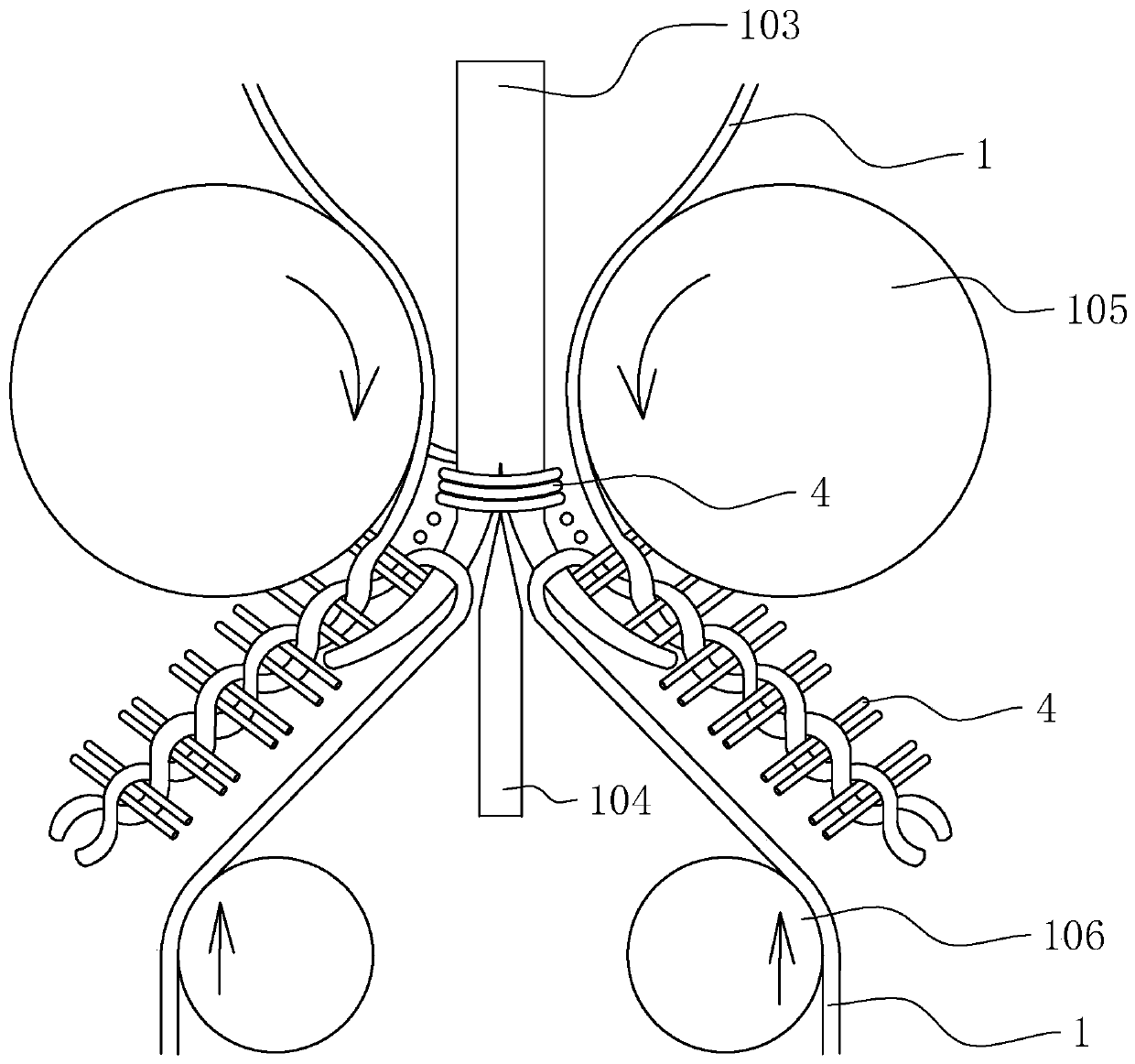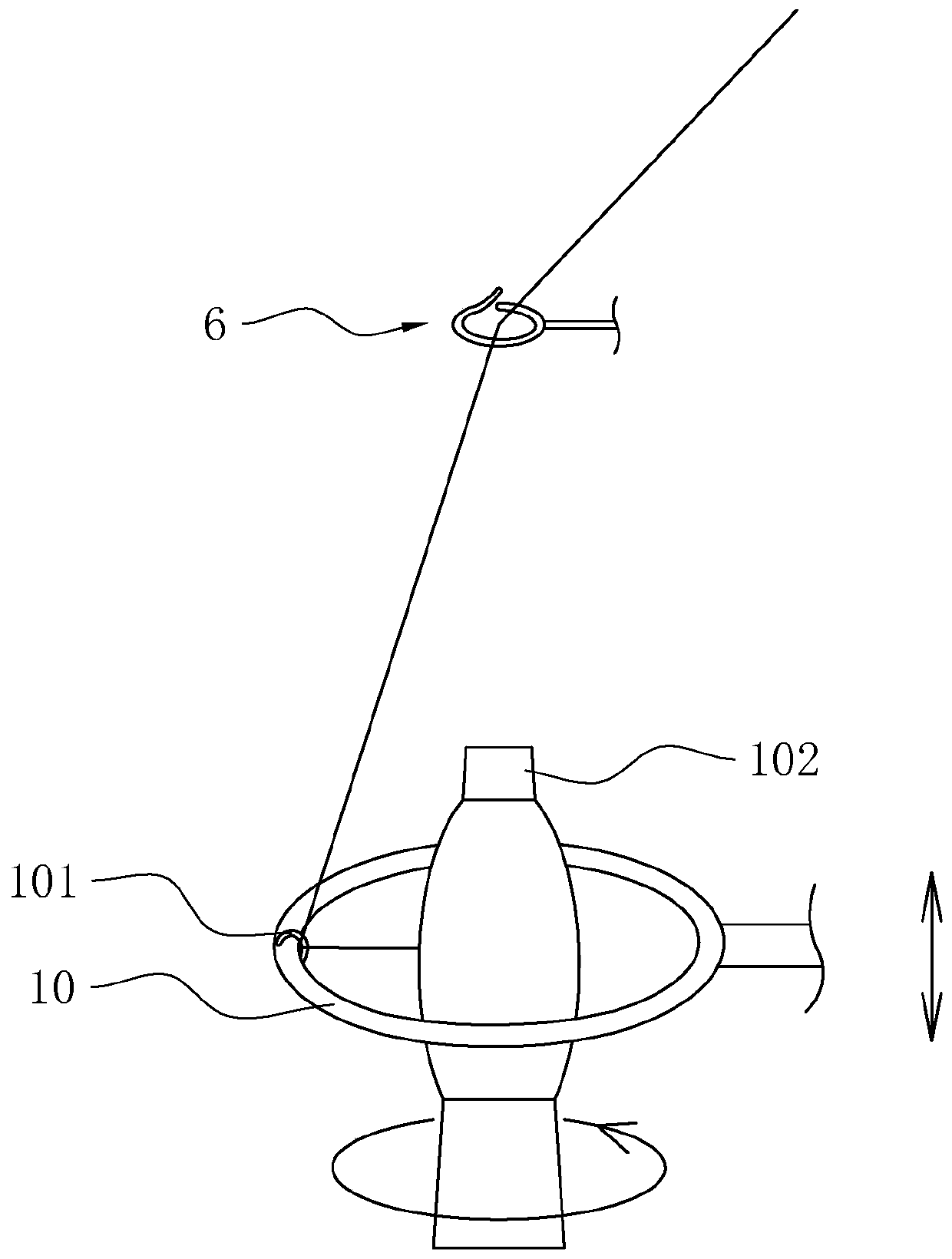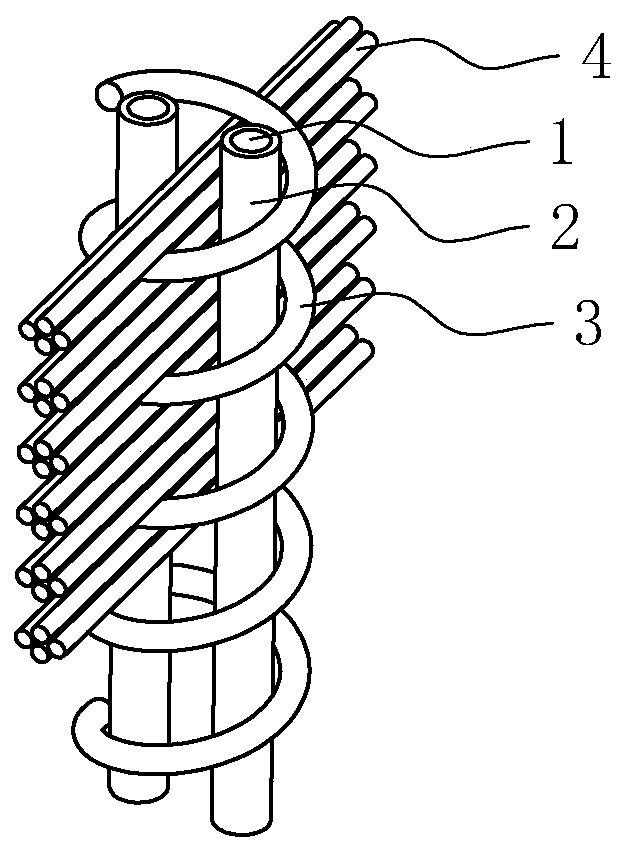Anti-delinting chenille yarn and production process thereof
A technology of chenille yarn and production process, applied in the direction of yarn, textile and papermaking, adhesives, etc., can solve the problems of affecting the degree of tension, weak connection force, velvet yarn 4 easily coming out of the twisting hole of core yarn 1, etc. , to avoid uneven twist and high winding efficiency
- Summary
- Abstract
- Description
- Claims
- Application Information
AI Technical Summary
Problems solved by technology
Method used
Image
Examples
Embodiment 1
[0056] Embodiment 1: Reference image 3 , is an anti-shedding chenille yarn disclosed by the present invention, comprising two core yarns 1 parallel to each other, two hollow hot-melt adhesive yarns 2, and spirally wrapped around all core yarns 1. The gap between the wrapping yarn 3 and the core yarn 1 is the clamping gap, and the wrapping yarn 3 divides the clamping gap into several twist holes arranged along the length direction of the core yarn 1, and each twist hole is inserted into the gap There is a tufted yarn 4; each hot-melt adhesive yarn 2 is fixedly wrapped on the periphery of a core yarn 1, and the wrapping yarn 3 can be any one of elastic polyester material, elastic spandex material, and elastic acrylic material.
[0057] The implementation principle of this embodiment is: since the hot-melt adhesive yarn 2 is added to the entire chenille yarn, the melted hot-melt adhesive can bond the core yarn 1 and the down Yarn 4, thereby greatly reducing the probability of v...
Embodiment 2
[0060] Embodiment two: reference Figure 4 , is an anti-shedding chenille yarn disclosed by the present invention, which includes two core yarns 1 parallel to each other, two solid hot-melt adhesive yarns 2, and a wrapping wrapping around all core yarns 1 in a spiral shape. The gap between the wrapping yarn 3 and the core yarn 1 is the material gap, and the wrapping yarn 3 divides the material gap into several twist holes arranged along the length direction of the core yarn 1, and the twist holes are filled with velvet yarns. 4. The hot-melt adhesive yarn 2 is parallel to the core yarn 1 and wrapped in the wrapping yarn 3. Each hot-melt adhesive yarn 2 corresponds to a core yarn 1. During the weaving process, the hot-melt adhesive yarn 2 can be followed side by side The corresponding core yarn 1 is fed into the chenille machine head; the wrapping yarn 3 is any one of elastic polyester material, elastic spandex material and elastic acrylic material.
[0061] The implementation...
Embodiment 3
[0065] Embodiment three: reference Figure 5 , is a kind of production technology that is used for producing anti-shedding chenille yarn disclosed by the present invention, comprises the steps:
[0066] A, select outer periphery to be covered with the core yarn 1 of one deck hot-melt adhesive yarn 2, and the wrapped yarn 3 of elastic material; Produce semi-finished chenille yarn 51 by chenille yarn machine head 5, semi-finished chenille yarn 51 It includes two core yarns 1 parallel to each other and pile yarn 4 sandwiched between the core yarns 1;
[0067] B, the semi-finished chenille yarn 51 that chenille yarn machine head 5 produces enters in the hollow ingot wrapping mechanism 7, and the hollow ingot wrapping mechanism 7 comprises the hollow tube 71 of pay-off line, is connected in the hollow tube 71 lower ends of the pay-off line The hollow ingot twisting hook 9, the driving assembly 72 for driving the pay-off hollow tube 71 and the hollow ingot twisting hook 9 to rotate...
PUM
 Login to View More
Login to View More Abstract
Description
Claims
Application Information
 Login to View More
Login to View More - R&D Engineer
- R&D Manager
- IP Professional
- Industry Leading Data Capabilities
- Powerful AI technology
- Patent DNA Extraction
Browse by: Latest US Patents, China's latest patents, Technical Efficacy Thesaurus, Application Domain, Technology Topic, Popular Technical Reports.
© 2024 PatSnap. All rights reserved.Legal|Privacy policy|Modern Slavery Act Transparency Statement|Sitemap|About US| Contact US: help@patsnap.com










